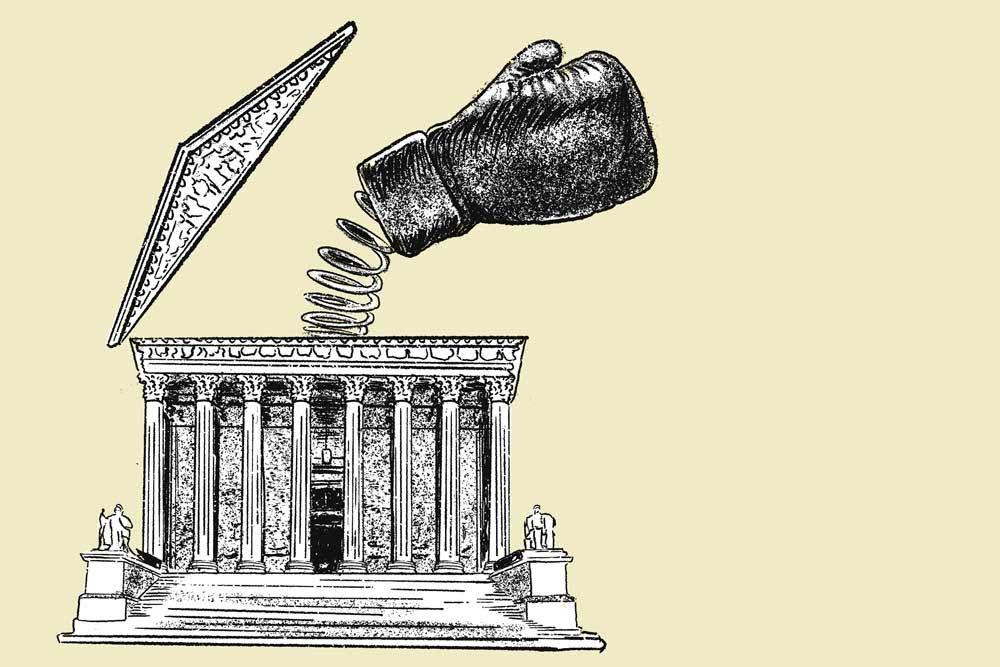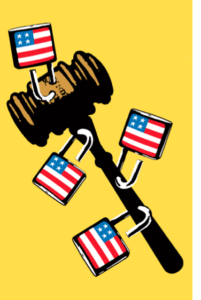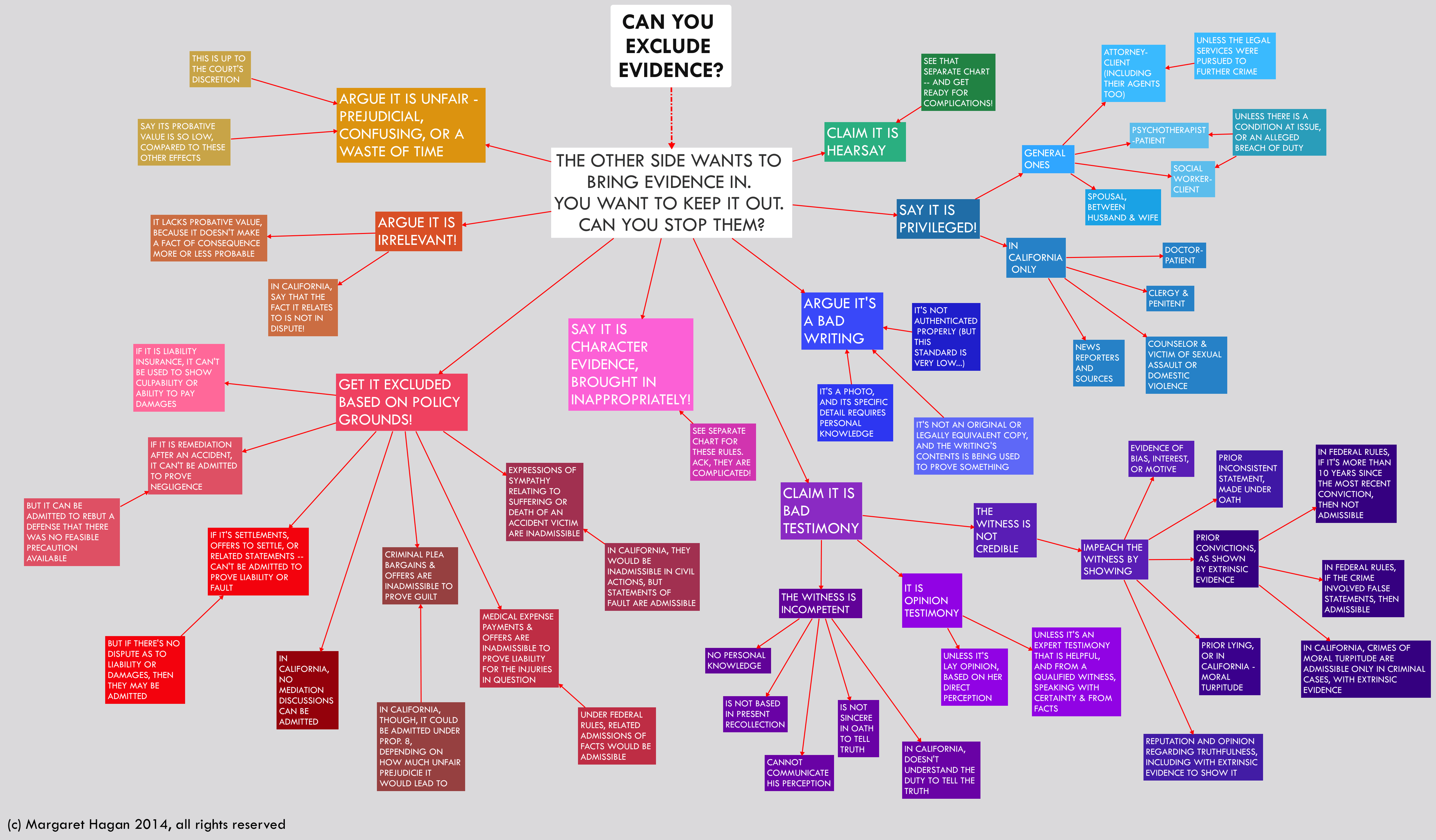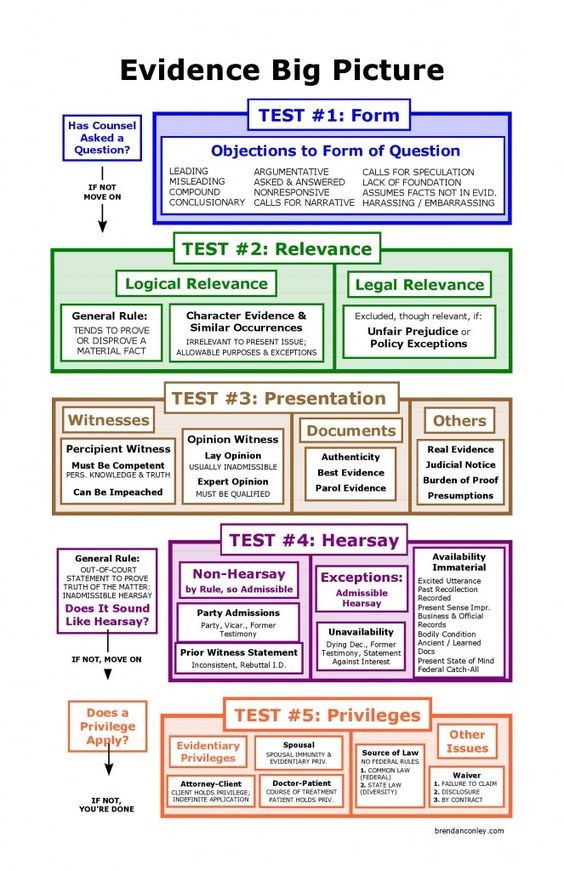Penal Code 118 PC – California Penalty of “Perjury” Law
perjury is considered a crime of moral turpitude
Can Police Lye on Affidavits – Short Answer, NO! THAT IS A VIOLATION OF PC 118.1
Not if they Value their Career & Freedom and Don’t want civil responsibility
Police have no expectation of privacy on phone calls. Police lines are recorded expectations end there!
Perjury Definition
The law defines perjury as the act of:
“Any person who, in any affidavit taken before any person authorized to administer oaths, swears, affirms, declares, deposes, or certifies that he will testify, declare, depose, or certify before any competent tribunal, officer, or person, in any case then pending or thereafter to be instituted, in any particular manner, or to any particular fact, and in such affidavit willfully and contrary to such oath states as true any material matter which he knows to be false, is guilty of perjury.”
California Penal Code 118 PC
Examples Of Perjury
The following are some examples of this crime:
- Lying when questioned about committing a crime of which he had full knowledge. For example, witnessing a homicide and responding on the stand or in an interrogation with the prosecutor who was not present at the scene.
- Being summoned by a court to give a statement about a robbery and misrepresenting the facts. Either accusing an innocent or omitting actions relevant to the case.
- Sign an affidavit in which false information is offered on a particular matter. For example, on the tax return.
- Authenticate as a notary a document under oath, knowing that it is false.
What Elements Constitute The Crime And Penalty Of Perjury In California?
To prove perjury the prosecutor must prove that the defendant:
- Swore to testify and tell the truth under penalty of perjury,
- Deliberately declared their testimony to be true despite knowing it to be false.
- Refused to provide details of a fact, deliberately omitted them, or presented inconsistent testimony.
- The information provided was of a “material” nature.
- Knew they were testifying under oath, and
- Intended to make a false statement when they appeared in court.
It is important to specify that for the penalty of perjury in California to be constituted, the message must also be communicated.
For example, you fill out a job or other application form under oath with false information and then change your mind and do not submit it. In that case, you will not have committed perjury. Even if someone else filed it for you.
What Is A Material Fact?
It is necessary that the statement lead to a material fact. That is, it is of importance or generates consequences.
The law qualifies a fact as material when:
- It is used to influence the outcome of the procedure performed, or
- It was likely to influence that result.
However, in a trial it is not a prerequisite that the testimony necessarily influence the judicial process. Just as it is not established that the person had to know that his statement was material.
Under What Circumstances Could You Be Charged With Perjury?
A person can be prosecuted for perjury if they give false information by:
- Testifying in court.
- Being questioned by a competent authority.
- A signed affidavit.
- Any other official signed statement,
- Applying for a driver’s license through the California Department of Motor Vehicles (DMV) DL 44 form .
- Signing a certificate.
What Is The Penalty For The Crime Of Perjury In California?
Perjury in the state is penalized as a felony with:
- Imprisonment for one year in the county jail.
- Imprisonment of two to four years in the state jail and/or
- Maximum fine of $10,000.
At the judge’s discretion, the court may order an alternative measure of parole. Thus, the convicted person would not have to remain in prison while serving the sentence. source
The judge has discretion to issue the penalty how he sees fit based on the following factors:
- Seriousness of your perjury,
- Whether your perjury harmed another person.
The judge can issue any of the following penalties:
- Felony probation
- Imprisonment in county jail up to 1 year
- Imprisonment in state prison for two, three or four years.
Suborning Perjury
Under California Penal Code Section 127 in addition to committing perjury a person can also be convicted for a “suborning perjury”. Suborning perjury means that the defendant intentionally persuaded, invited or coerced another person to commit perjury either in writing or verbally.
California Penal Code 118 PC defines the crime of perjury as when a person deliberately gives false testimony while under oath. A conviction is a felony punishable by probation, fines, and up to 4 years in jail or prison.
The language of the statute reads that:
118. (a) Every person who, having taken an oath that he or she will testify, declare, depose, or certify truly before any competent tribunal, officer, or person, in any of the cases in which the oath may by law of the State of California be administered, willfully and contrary to the oath, states as true any material matter which he or she knows to be false, and every person who testifies, declares, deposes, or certifies under penalty of perjury in any of the cases in which the testimony, declarations, depositions, or certification is permitted by law of the State of California under penalty of perjury and willfully states as true any material matter which he or she knows to be false, is guilty of perjury.
This subdivision is applicable whether the statement, or the testimony, declaration, deposition, or certification is made or subscribed within or without the State of California.
(b) No person shall be convicted of perjury where proof of falsity rests solely upon contradiction by testimony of a single person other than the defendant. Proof of falsity may be established by direct or indirect evidence.
Examples of perjury
- lying about the identification of a suspect when testifying in a California criminal trial.
- providing false information about a car accident in a deposition for a personal injury case.
- giving false information on a material matter in a signed affidavit.
Defenses
A defendant can challenge a penalty of perjury charge with a legal defense. Common defenses include showing that:
- any falsehood was not intentional in nature
- the subject matter was not “material”, and/or
- the person was not actually under oath.
Penalties
A violation of this statute is a felony.
- This table breaks down the 15 states with security camera laws and notes where video surveillance is allowed and under what circumstances.
- An oath is an affirmation or any other method authorized by law to affirm the truth of a statement. [↩]
- Elements. Penal Code 118; CALCRIM No. 2640. [↩]
- Could be in a form of testimony, declaration, deposition, or certification. [↩]
- Someone commits an act willfully when he or she does it willingly or on purpose. CALCRIM No. 2640. [↩]
- Information is material if it is probable that the information would influence the outcome of the proceedings, but it does not need to actually have an influence on the proceedings. Knowledge of Materiality is not necessary. Penal Code Section 123. [↩]
- Specific Intent to Testify Falsely Required. People v. Viniegra (1982) 130 Cal.App.3d 577, 584 [181 Cal.Rptr. 848]; see also People v. Hagen (1998) 19 Cal.4th 652, 663–664 [80 Cal.Rptr.2d 24, 967 P.2d 563] [discussing intent requirement for perjury]. [↩]
- Penal Code Section 124; People v. Griffıni (1998) 65 Cal.App.4th 581, 596 [76 Cal.Rptr.2d 590] [delivery requirement applies to “declaration”; discussing at length meaning of “deposition,” “declaration,” “certificate,” and “affidavit”]; Collins v. Superior Court (2001) 89 Cal.App.4th 1244, 1247 [108 Cal.Rptr.2d 123]; People v. Post (2001) 94 Cal.App.4th 467, 480–481 [114 Cal.Rptr.2d 356]. [↩]
- Good Faith Belief Statement True Negates Intent. People v. Von Tiedeman (1898) 120 Cal. 128, 134 [52 P. 155] [cited with approval in People v. Hagen (1998) 19 Cal.4th 652, 663–664 [80 Cal.Rptr.2d 24, 967 P.2d 563]]; People v. Louie (1984) 158 Cal.App.3d Supp. 28, 43 [205 Cal.Rptr. 247]. [↩]
- People v. Baranov (1962) 201 Cal.App.2d 52, 60–61 [19 Cal.Rptr. 866]. [↩]
- There must be some other evidence that the defendant’s statement was false that corroborates the testimony of the witness. People v. Di Giacomo (1961) 193 Cal.App.2d 688, 698 [14 Cal.Rptr. 574]; Penal Code Section 118(b). This other evidence may be direct or indirect. [↩]
Exceptions:
allow anyone to recording any criminal civilians harming them
The Truth Wins, Finally!
California Supreme Court Concludes Over Secret Recording: Not Barred!
People v. Guzman – Secret Recordings – Right To Truth Prop 1982
Right to Truth – Victims’ Bill of Rights – Prop 8 1982
RECORDING-CONVERSATIONS-CHART
Page 2135 Calcrim defines confidential communication as such:
[A confidential communication does not include a communication made in a public gathering or in any legislative, judicial, executive, or administrative proceeding open to the public, or in any other circumstance in which the parties to the communication may reasonably expect that the communication may be overheard or recorded.]
| State | Public places allowed | Private places allowed | Hidden cameras allowed | Consent required |
| Alabama | Yes | No | Yes | No |
| Alabama | Yes | Yes | No | In private places |
| California* | Yes | Yes | No | No |
| Delaware | Yes | No | With consent | Yes |
| Florida | Yes | No | Yes | No |
| Georgia† | Yes | Yes | No | No |
| Hawaii | Yes | Yes | No | Yes |
| Kansas | Yes | No | With consent | Yes |
| Maine | Yes | No | With consent | Yes |
| Michigan | Yes | With consent | With consent | Yes |
| Minnesota | Yes | No | Yes | No |
| New Hampshire | Yes | No | With consent | Yes |
| South Dakota | Yes | No | With consent | Yes |
| Tennessee | Yes | With consent | With consent | Yes |
| Utah | Yes | With consent | With consent | Yes |
To Learn More…. Read MORE Below and click the links Below
Abuse & Neglect – The Mandated Reporters (Police, D.A & Medical & the Bad Actors)
Mandated Reporter Laws – Nurses, District Attorney’s, and Police should listen up
If You Would Like to Learn More About: The California Mandated Reporting LawClick Here
To Read the Penal Code § 11164-11166 – Child Abuse or Neglect Reporting Act – California Penal Code 11164-11166Article 2.5. (CANRA) Click Here
Mandated Reporter formMandated ReporterFORM SS 8572.pdf – The Child Abuse
ALL POLICE CHIEFS, SHERIFFS AND COUNTY WELFARE DEPARTMENTS INFO BULLETIN:
Click Here Officers and DA’s for (Procedure to Follow)
It Only Takes a Minute to Make a Difference in the Life of a Child learn more below
You can learn more here California Child Abuse and Neglect Reporting Law its a PDF file
Learn More About Police, The Government Officials and You….
$$ Retaliatory Arrests and Prosecution $$
Anti-SLAPP Law in California
Freedom of Assembly – Peaceful Assembly – 1st Amendment Right
Supreme Court sets higher bar for prosecuting threats under First Amendment 2023 SCOTUS
We also have the Brayshaw v. City of Tallahassee – 1st Amendment – Posting Police Address
We also have the Publius v. Boyer-Vine –1st Amendment – Posting Police Address
We also have the Lozman v. City of Riviera Beach, Florida (2018) – 1st Amendment – Retaliatory Police Arrests
We also have the Nieves v. Bartlett (2019) – 1st Amendment – Retaliatory Police Arrests
We also have the Hartman v. Moore (2006) – 1st Amendment – Retaliatory Police Arrests
Retaliatory Prosecution Claims Against Government Officials – 1st Amendment
We also have the Reichle v. Howards (2012) – 1st Amendment – Retaliatory Police Arrests
Retaliatory Prosecution Claims Against Government Officials – 1st Amendment
Can You Annoy the Government? – 1st Amendment
Freedom of the Press – Flyers, Newspaper, Leaflets, Peaceful Assembly – 1$t Amendment – Learn More Here
Vermont’s Top Court Weighs: Are KKK Fliers – 1st Amendment Protected Speech
We also have the Insulting letters to politician’s home are constitutionally protected, unless they are ‘true threats’ – Letters to Politicians Homes – 1st Amendment
We also have the First Amendment Encyclopedia very comprehensive – 1st Amendment
Paglia & Associates Construction v. Hamilton – Public Internet Posts & Public Criticisms – Bad Reviews – 1st Amendment
Learn More About True Threats Here below….
Counterman v. Colorado – Supreme Court sets higher bar for prosecuting threats under First Amendment
We also have the The Brandenburg v. Ohio (1969) – 1st Amendment
CURRENT TEST = We also have the The ‘Brandenburg test’ for incitement to violence – 1st Amendment
We also have the The Incitement to Imminent Lawless Action Test– 1st Amendment
We also have the True Threats – Virginia v. Black is most comprehensive Supreme Court definition – 1st Amendment
We also have the Watts v. United States – True Threat Test – 1st Amendment
We also have the Clear and Present Danger Test – 1st Amendment
We also have the Gravity of the Evil Test – 1st Amendment
We also have the Elonis v. United States (2015) – Threats – 1st Amendment
Learn More About What is Obscene…. be careful about education it may enlighten you
We also have the Miller v. California – 3 Prong Obscenity Test (Miller Test) – 1st Amendment
We also have the Obscenity and Pornography – 1st Amendment
Mi$Conduct – Pro$ecutorial Mi$Conduct Prosecutor$
Attorney Rule$ of Engagement – Government (A.K.A. THE PRO$UCTOR) and Public/Private Attorney
What is a Fiduciary Duty; Breach of Fiduciary Duty
The Attorney’s Sworn Oath
Malicious Prosecution / Prosecutorial Misconduct – Know What it is!
New Supreme Court Ruling – makes it easier to sue police
Possible courses of action Prosecutorial Misconduct
Misconduct by Judges & Prosecutor – Rules of Professional Conduct
Functions and Duties of the Prosecutor – Prosecution Conduct
Standards on Prosecutorial Investigations – Prosecutorial Investigations
Information On Prosecutorial Discretion
Why Judges, District Attorneys or Attorneys Must Sometimes Recuse Themselves
Fighting Discovery Abuse in Litigation – Forensic & Investigative Accounting – Click Here
Criminal Motions § 1:9 – Motion for Recusal of Prosecutor
Pen. Code, § 1424 – Recusal of Prosecutor
Removing Corrupt Judges, Prosecutors, Jurors and other Individuals & Fake Evidence from Your Case
National District Attorneys Association puts out its standards
National Prosecution Standards – NDD can be found here
The Ethical Obligations of Prosecutors in Cases Involving Postconviction Claims of Innocence
ABA – Functions and Duties of the Prosecutor – Prosecution Conduct
Prosecutor’s Duty Duty to Disclose Exculpatory Evidence Fordham Law Review PDF
Chapter 14 Disclosure of Exculpatory and Impeachment Information PDF
Mi$Conduct – Judicial Mi$Conduct Judge$
Prosecution Of Judges For Corrupt Practice$
Code of Conduct for United States Judge$
Disqualification of a Judge for Prejudice
Judicial Immunity from Civil and Criminal Liability
Recusal of Judge – CCP § 170.1 – Removal a Judge – How to Remove a Judge
l292 Disqualification of Judicial Officer – C.C.P. 170.6 Form
How to File a Complaint Against a Judge in California?
Commission on Judicial Performance – Judge Complaint Online Form
Why Judges, District Attorneys or Attorneys Must Sometimes Recuse Themselves
Removing Corrupt Judges, Prosecutors, Jurors and other Individuals & Fake Evidence from Your Case
DUE PROCESS READS>>>>>>
Due Process vs Substantive Due Process learn more HERE
Understanding Due Process – This clause caused over 200 overturns in just DNA alone Click Here
Mathews v. Eldridge – Due Process – 5th, & 14th Amendment
Mathews Test – 3 Part Test– Amdt5.4.5.4.2 Mathews Test
“Unfriending” Evidence – 5th Amendment
At the Intersection of Technology and Law
We also have the Introducing TEXT & EMAIL Digital Evidence in California Courts – 1st Amendment
so if you are interested in learning about Introducing Digital Evidence in California State Courts
click here for SCOTUS rulings
Right to Travel freely – When the Government Obstructs Your Movement – 14th Amendment & 5th Amendment
What is Probable Cause? and.. How is Probable Cause Established?
Misuse of the Warrant System – California Penal Code § 170 – Crimes Against Public Justice – 4th, 5th, & 14th Amendment
What Is Traversing a Warrant (a Franks Motion)?
Dwayne Furlow v. Jon Belmar – Police Warrant – Immunity Fail – 4th, 5th, & 14th Amendment
Obstruction of Justice and Abuse of Process
What Is Considered Obstruction of Justice in California?
ARE PEOPLE LYING ON YOU?
CAN YOU PROVE IT? IF YES…. THEN YOU ARE IN LUCK!
Penal Code 115 PC – Filing a False Document in California
Penal Code 118 PC – California Penalty of “Perjury” Law
Federal Perjury – Definition by Law
Penal Code 132 PC – Offering False Evidence
Penal Code 134 PC – Preparing False Evidence
Crimes Against Public Justice
Penal Code 118.1 PC – Police Officer$ Filing False Report$
Spencer v. Peters– Police Fabrication of Evidence – 14th Amendment
Lying Cop or Citizen – PC 129 – Preparing False Statement or Report Under Oath
Penal Code 132 PC – Offering False Evidence
Penal Code 134 PC – Preparing False Evidence
Penal Code 135 PC – Destroying or Concealing Evidence
Lying Cop or Citizen – PC 129 – Preparing False Statement or Report Under Oath
Penal Code 141 PC – Planting or Tampering with Evidence in California
Penal Code 142 PC – Peace Officer Refusing to Arrest or Receive Person Charged with Criminal Offense
PC 146 Penal Code – False Arrest
Penal Code 148.5 PC – Making a False Police Report in California
Misuse of the Warrant System – California Penal Code § 170
Penal Code 182 PC – “Criminal Conspiracy” Laws & Penalties
Penal Code § 236 PC – False Imprisonment
Penal Code 664 PC – “Attempted Crimes” in California
Penal Code 31 PC – Aiding and Abetting Laws
Penal Code 32 PC – Accessory After the Fact
What is Abuse of Process?
What is a Due Process Violation? – 4th Amendment & 14th Amendment
What’s the Difference between Abuse of Process, Malicious Prosecution and False Arrest?
Defeating Extortion and Abuse of Process in All Their Ugly Disguises
The Use and Abuse of Power by Prosecutors (Justice for All)
Misconduct by Government Know Your Rights Click Here
Under 42 U.S.C. $ection 1983 – Recoverable Damage$
42 U.S. Code § 1983 – Civil Action for Deprivation of Right$
18 U.S. Code § 242 – Deprivation of Right$ Under Color of Law
18 U.S. Code § 241 – Conspiracy against Right$
Section 1983 Lawsuit – How to Bring a Civil Rights Claim
Suing for Misconduct – Know More of Your Right$
Police Misconduct in California – How to Bring a Lawsuit
How to File a complaint of Police Misconduct? (Tort Claim Forms here as well)
Deprivation of Rights – Under Color of the Law
What is Sua Sponte and How is it Used in a California Court?
Removing Corrupt Judges, Prosecutors, Jurors
and other Individuals & Fake Evidence from Your Case
Anti-SLAPP Law in California
Freedom of Assembly – Peaceful Assembly – 1st Amendment Right
How to Recover “Punitive Damages” in a California Personal Injury Case
Pro Se Forms and Forms Information(Tort Claim Forms here as well)
What is Tort?
Tort Claims Form
File Government Claim for Eligible Compensation
Complete and submit the Government Claim Form, including the required $25 filing fee or Fee Waiver Request, and supporting documents, to the GCP.
See Information Guides and Resources below for more information.
Tort Claims – Claim for Damage, Injury, or Death (see below)
Federal – Federal SF-95 Tort Claim Form Tort Claim online here or download it here or here from us
California – California Tort Claims Act – California Tort Claim Form Here or here from us
Complaint for Violation of Civil Rights (Non-Prisoner Complaint) and also UNITED STATES DISTRICT COURT PDF
Taken from the UNITED STATES DISTRICT COURT FOR THE EASTERN DISTRICT OF CALIFORNIA Forms source
WRITS and WRIT Types in the United States
How do I submit a request for information?
To submit a request send the request via mail, fax, or email to the agency. Some agencies list specific departments or people whose job it is to respond to PRA requests, so check their websites or call them for further info. Always keep a copy of your request so that you can show what you submitted and when.
Templates for Sample Requests
Incident Based Request: Use this template if you want records related to a particular incident, like the investigative record for a specific police shooting, an arrest where you believe an officer may have been found to have filed a false report, or to find out whether complaint that an officer committed sexual assault was sustained.
ACLU Download Word document | ACLU Download PDF
or from us Download Word document | or from us Download PDF
Officer Based Request: Use this template if you want to find any public records of misconduct related to a particular officer or if he or she has been involved in past serious uses of force.
ACLU Download Word document | ACLU Download PDF
or from us Download Word document | or from us Download PDF
The First Amendment Coalition also has some useful information to help explain the PRA process.
Sample Letter | SB 1421 & SB 16 Records
Appealing/Contesting Case/Order/Judgment/Charge/ Suppressing Evidence
First Things First: What Can Be Appealed and What it Takes to Get Started – Click Here
Options to Appealing– Fighting A Judgment Without Filing An Appeal Settlement Or Mediation
Cal. Code Civ. Proc. § 1008 Motion to Reconsider
Penal Code 1385 – Dismissal of the Action for Want of Prosecution or Otherwise
Penal Code 1538.5 – Motion To Suppress Evidence in a California Criminal Case
CACI No. 1501 – Wrongful Use of Civil Proceedings
Penal Code “995 Motions” in California – Motion to Dismiss
WIC § 700.1 – If Court Grants Motion to Suppress as Evidence
Suppression Of Exculpatory Evidence / Presentation Of False Or Misleading Evidence – Click Here
Notice of Appeal — Felony (Defendant) (CR-120) 1237, 1237.5, 1538.5(m) – Click Here
California Motions in Limine – What is a Motion in Limine?
Petition for a Writ of Mandate or Writ of Mandamus (learn more…)
PC 1385 – Dismissal of the Action for Want of Prosecution or Otherwise
Retrieving Evidence / Internal Investigation Case
Pitchess Motion & the Public Inspection of Police Records
Conviction Integrity Unit (“CIU”) of the Orange County District Attorney OCDA – Click Here
Fighting Discovery Abuse in Litigation – Forensic & Investigative Accounting – Click Here
Orange County / LA County Data, BodyCam, Police Report, Incident Reports,
and all other available known requests for data below:
SEARCH SB-1421 SB-16 Incidents of LA County, Oakland
California Senate Bill 16 (SB 16) – 2023-2024 – Peace officers: Release of Records
APPLICATION TO EXAMINE LOCAL ARREST RECORD UNDER CPC 13321 Click Here
Learn About Policy 814: Discovery Requests OCDA Office – Click Here
Request for Proof In-Custody Form Click Here
Request for Clearance Letter Form Click Here
Application to Obtain Copy of State Summary of Criminal HistoryForm Click Here
Request Authorization Form Release of Case Information – Click Here
Texts / Emails AS EVIDENCE: Authenticating Texts for California Courts
Can I Use Text Messages in My California Divorce?
Two-Steps And Voila: How To Authenticate Text Messages
How Your Texts Can Be Used As Evidence?
California Supreme Court Rules:
Text Messages Sent on Private Government Employees Lines
Subject to Open Records Requests
case law: City of San Jose v. Superior Court – Releasing Private Text/Phone Records of Government Employees
Public Records Practices After the San Jose Decision
The Decision Briefing Merits After the San Jose Decision
Rules of Admissibility – Evidence Admissibility
Confrontation Clause – Sixth Amendment
Exceptions To The Hearsay Rule – Confronting Evidence
Prosecutor’s Obligation to Disclose Exculpatory Evidence
Successful Brady/Napue Cases – Suppression of Evidence
Cases Remanded or Hearing Granted Based on Brady/Napue Claims
Unsuccessful But Instructive Brady/Napue Cases
ABA – Functions and Duties of the Prosecutor – Prosecution Conduct
Frivolous, Meritless or Malicious Prosecution – fiduciary duty
Section 832.7 – Peace officer or custodial officer personnel records
Senate Bill No. 1421 – California Public Records Act
Assembly Bill 748 Makes Video Evidence Captured by Police Agencies Subject to Disclosure as Public Records
SB 2, Creating Police Decertification Process and Expanding Civil Liability Exposure
The Right To Know: How To Fulfill The Public’s Right Of Access To Police Records
How Access to California Police Records
Los Angeles County Sheriff’s Department SB-1421 Records
SB1421 – Form Access to California Police Records
California Statewide CPRA Requests Submit a CPRA Request
Electronic Audio Recording Request of OC Court Hearings
CPRA Public Records Act Data Request – Click Here
Here is the Public Records Service Act Portal for all of CALIFORNIA Click Here
Police BodyCam Footage Release
Cleaning Up Your Record
Tossing Out an Inferior Judgement – When the Judge Steps on Due Process – California Constitution Article VI – Judicial Section 13
Penal Code 851.8 PC – Certificate of Factual Innocence in California
Petition to Seal and Destroy Adult Arrest Records – Download the PC 851.8 BCIA 8270 Form Here
SB 393: The Consumer Arrest Record Equity Act – 851.87 – 851.92 & 1000.4 – 11105 – CARE ACT
Expungement California – How to Clear Criminal Records Under Penal Code 1203.4 PC
How to Vacate a Criminal Conviction in California – Penal Code 1473.7 PC
Seal & Destroy a Criminal Record
Cleaning Up Your Criminal Record in California (focus OC County)
Governor Pardons –What Does A Governor’s Pardon Do
How to Get a Sentence Commuted (Executive Clemency) in California
How to Reduce a Felony to a Misdemeanor – Penal Code 17b PC Motion
PARENT CASE LAW
RELATIONSHIP WITH YOUR CHILDREN &
YOUR CONSTITUIONAL RIGHT$ + RULING$
YOU CANNOT GET BACK TIME BUT YOU CAN HIT THOSE IMMORAL NON CIVIC MINDED PUNKS WHERE THEY WILL FEEL YOU = THEIR BANK
Family Law Appeal – Learn about appealing a Family Court Decision Here
9.3 Section 1983 Claim Against Defendant as (Individuals) — 14th Amendment this CODE PROTECT$ all US CITIZEN$
Amdt5.4.5.6.2 – Parental and Children’s Rights“> – 5th Amendment this CODE PROTECT$ all US CITIZEN$
9.32 – Interference with Parent / Child Relationship – 14th Amendment this CODE PROTECT$ all US CITIZEN$
California Civil Code Section 52.1 – The Bane Act
Interference with exercise or enjoyment of individual rights
Parent’s Rights & Children’s Bill of Rights
SCOTUS RULINGS FOR YOUR PARENT RIGHTS
SEARCH of our site for all articles relating for PARENTS RIGHTS Help!
Child’s Best Interest in Custody Cases
Are You From Out of State (California)? FL-105 GC-120(A)
Declaration Under Uniform Child Custody Jurisdiction and Enforcement Act (UCCJEA)
Learn More:Family Law Appeal
Necessity Defense in Criminal Cases
Can You Transfer Your Case to Another County or State With Family Law? – Challenges to Jurisdiction
Venue in Family Law Proceedings
GRANDPARENT CASE LAW
Do Grandparents Have Visitation Rights? If there is an Established Relationship then Yes
Third “PRESUMED PARENT” Family Code 7612(C) – Requires Established Relationship Required
Cal State Bar PDF to read about Three Parent Law –
The State Bar of California family law news issue4 2017 vol. 39, no. 4.pdf
Distinguishing Request for Custody from Request for Visitation
Troxel v. Granville, 530 U.S. 57 (2000) – Grandparents – 14th Amendment
S.F. Human Servs. Agency v. Christine C. (In re Caden C.)
9.32 Particular Rights – Fourteenth Amendment – Interference with Parent / Child Relationship
Child’s Best Interest in Custody Cases
When is a Joinder in a Family Law Case Appropriate? – Reason for Joinder
Joinder In Family Law Cases – CRC Rule 5.24
GrandParents Rights To Visit
Family Law Packet OC Resource Center
Family Law Packet SB Resource Center
Motion to vacate an adverse judgment
Mandatory Joinder vs Permissive Joinder – Compulsory vs Dismissive Joinder
When is a Joinder in a Family Law Case Appropriate?
Kyle O. v. Donald R. (2000) 85 Cal.App.4th 848
Punsly v. Ho (2001) 87 Cal.App.4th 1099
Zauseta v. Zauseta (2002) 102 Cal.App.4th 1242
S.F. Human Servs. Agency v. Christine C. (In re Caden C.)
Family Treatment Court Best Practice Standards
Download Here this Recommended Citation
Sanctions and Attorney Fee Recovery for Bad Actors
FAM § 3027.1 – Attorney’s Fees and Sanctions For False Child Abuse Allegations – Family Code 3027.1 – Click Here
FAM § 271 – Awarding Attorney Fees– Family Code 271 Family Court Sanction Click Here
Awarding Discovery Based Sanctions in Family Law Cases – Click Here
FAM § 2030 – Bringing Fairness & Fee Recovery – Click Here
Zamos v. Stroud – District Attorney Liable for Bad Faith Action – Click Here
Malicious Use of Vexatious Litigant – Vexatious Litigant Order Reversed
 Epic Criminal / Civil Right$ SCOTUS Help – Click Here
Epic Criminal / Civil Right$ SCOTUS Help – Click Here
 Epic Parents SCOTUS Ruling – Parental Right$ Help – Click Here
Epic Parents SCOTUS Ruling – Parental Right$ Help – Click Here
 Judge’s & Prosecutor’s Jurisdiction– SCOTUS RULINGS on
Judge’s & Prosecutor’s Jurisdiction– SCOTUS RULINGS on
 Prosecutional Misconduct – SCOTUS Rulings re: Prosecutors
Prosecutional Misconduct – SCOTUS Rulings re: Prosecutors
Please take time to learn new UPCOMING
The PROPOSED Parental Rights Amendment
to the US CONSTITUTION Click Here to visit their site
The proposed Parental Rights Amendment will specifically add parental rights in the text of the U.S. Constitution, protecting these rights for both current and future generations.
The Parental Rights Amendment is currently in the U.S. Senate, and is being introduced in the U.S. House.




